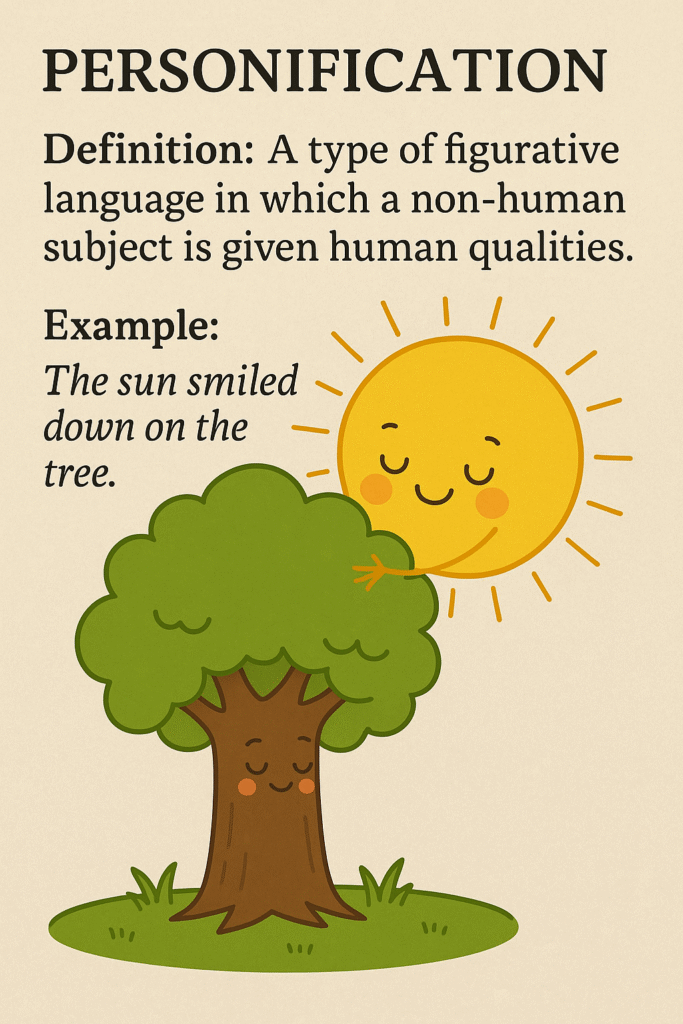Personification in Poetry
Welcome to this engaging and simple lecture on personification in poetry. This poetic device breathes life into lifeless things. It turns objects, ideas, or animals into characters that feel and act like humans. Writers use it to add vividness and emotion to their work. Through personification, poetry becomes more relatable and impactful.
To begin with, let’s define it clearly. Personification in poetry means giving human qualities to non-human things. For example, in the line, “The wind whispered through the trees,” the wind behaves like a person who whispers. Of course, wind cannot whisper, but personification makes this natural force seem alive and mysterious.
Moreover, poets often use this device to express emotions. When a poet says, “The angry storm roared across the sky,” we can sense the mood. Anger, a human emotion, is given to the storm. Therefore, the storm does not just make noise—it expresses fury. This helps readers feel what the poet feels.
In addition, personification in poetry makes abstract ideas easier to understand. For instance, the line “Justice stood tall with her blindfold” turns an idea into a character. Now, instead of trying to understand justice as a concept, readers can imagine it as a figure. This approach creates strong imagery and deeper connections.
Let us explore another example: “Time stole my childhood.” Time is not a thief, but personifying it in this way shows the sadness of growing up. Such lines touch readers emotionally because they recognize the human struggle behind the words.
Furthermore, personification in poetry strengthens theme and tone. A cheerful poem might say, “The sun smiled on the meadow.” In contrast, a sad one might state, “The lonely moon hid behind the clouds.” Both lines use personification to reflect the mood of the poem.
In conclusion, poets use personification to add emotion, depth, and imagination to their writing. By turning objects and ideas into characters, they connect better with readers. If you want your poems to sparkle with life, make good use of personification in poetry.

English Literature: https://englishlitnotes.com/category/history-of-english-literature/
American Literature: https://americanlit.englishlitnotes.com/the-prologue-by-anne-bradstreet/
Notes on English for All Classes: https://englishwithnaeemullahbutt.com/2025/05/18/chaucers-realism-realist/
Grammar Puzzle Solved: https://grammarpuzzlesolved.englishlitnotes.com/that-vs-which/
Discover more from Naeem Ullah Butt - Mr.Blogger
Subscribe to get the latest posts sent to your email.
